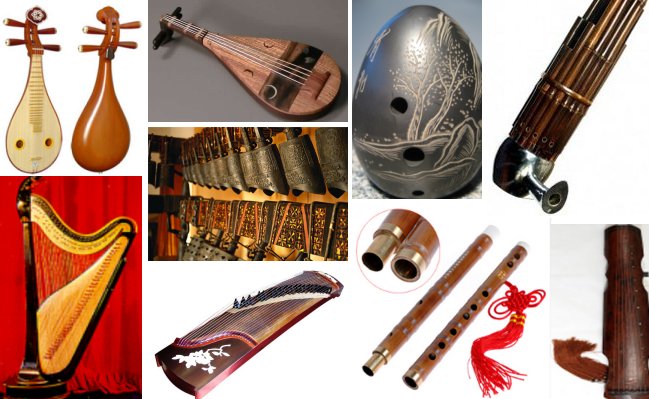Chinese Folk MuSical Instruments
3 min readAccording to recent archaeological findings,ancient Chinese music was much more developed and sophisticated than is generally believed.During the Shang Dynasty,music had already been an important element in traditional ritualistic ceremonies,such as during a traditional Chinese funeral procession.It reached one of its greatest peaks during the Zhou Dynasty,featuring a great abundance of percussion instruments,several wind instruments,but only a few zither-type string instruments.
All the bowed string instruments and most of the plucked string instruments first came to China from Central Asia after the Han dynasty.The Tang dynasty saw the first wave of musical influence from Central Asia,which was a very important epoch in the evolution of Chinese music.However,it was during the Song Dynasty that Chinese music reached its maturity.
Traditional Chinese musical instruments were classified into eight groups(bayin)according to their materials:bronze,stone,silk and bamboo,gourd,earthenware,hide and wood,many of which have been lost or are obsolete today.Like modern music instruments,traditional Chinese instruments are generally grouped according to the way they are played:1)bowed strings;2)plucked strings;3)woodwinds and 4)percussion.

Development of Folk Orchestral Instruments
More than 2,000 years ago,there were already quite a few musical instruments in China,namely,chime,drum,xun(an egg-shaped holed wind instrument),bell,etc.In the Zhou Dynasty and Spring and Autumn Period and Warring States Period,the number of musical instruments totaled over 80.During the period of Qin Dynasty,the Han Dynasty,the Three Kingdoms,the Jin Dynasty,the Southern and Northern Dynasties,Sui Dynasty and Tang Dynasty,there appeared such instruments as hengchui(like today’s bamboo flute),qiangdi(amusical instrument of the Qiang Minority),bi(the present guanzi),bronze drum,waist drum,etc.They have all become key instruments in modern national orchestral music.
In the Five Dynasty,the Song Dynasty,the Yuan Dynasty,the Ming Dynasty and the Qing Dynasty,with the rising of folk art there appeared more instruments,such as yunluo,bajiaogu,diangu,xiaomuyu,bangzi(percussion instruments),suona(wind instrument);sanxian and yangqin(plucked instruments),and erhu,banhu,jinghu,zhuihu,ect.(bowed instruments).
Like musical instruments,national orchestral music was well developed in ancient times.The most influential orchestras in history were wind music(Guchuiyue)in the Han Dynasty and Yanyue in the Tang Dynasty.The former mainly consisted of percussion instruments while the latter focused on tender music.
The locations of the imperial capitals in ancient times are the centers of the transmission of orchestras and maestros of folk music today.For example,Xilan percussion music dates from the days when Xi’an was the capital of the Tang Dynasty;the Daxiangguo Temple music of Kaifeng emerged when that city was the capital of the Song Dynasty; and the Zhihua Temple music of Beijing and the wind orchestra music of Hebei Province have associations with the days when Beijing was the capital of the Liao, Jin, Yuan, Ming and Qing Dynasties. Hebei’s Chengde City, which is not far from Beijing, was the summer resort of the Qing emperors, and local musicians can still play the court music of that time, despite the fact that the dynasty disappeared long ago. This makes it easy to understand why so many farmer-musicians can have such comparatively high artistic attainments. This is an important component of the Chinese people’s musical artistry.









